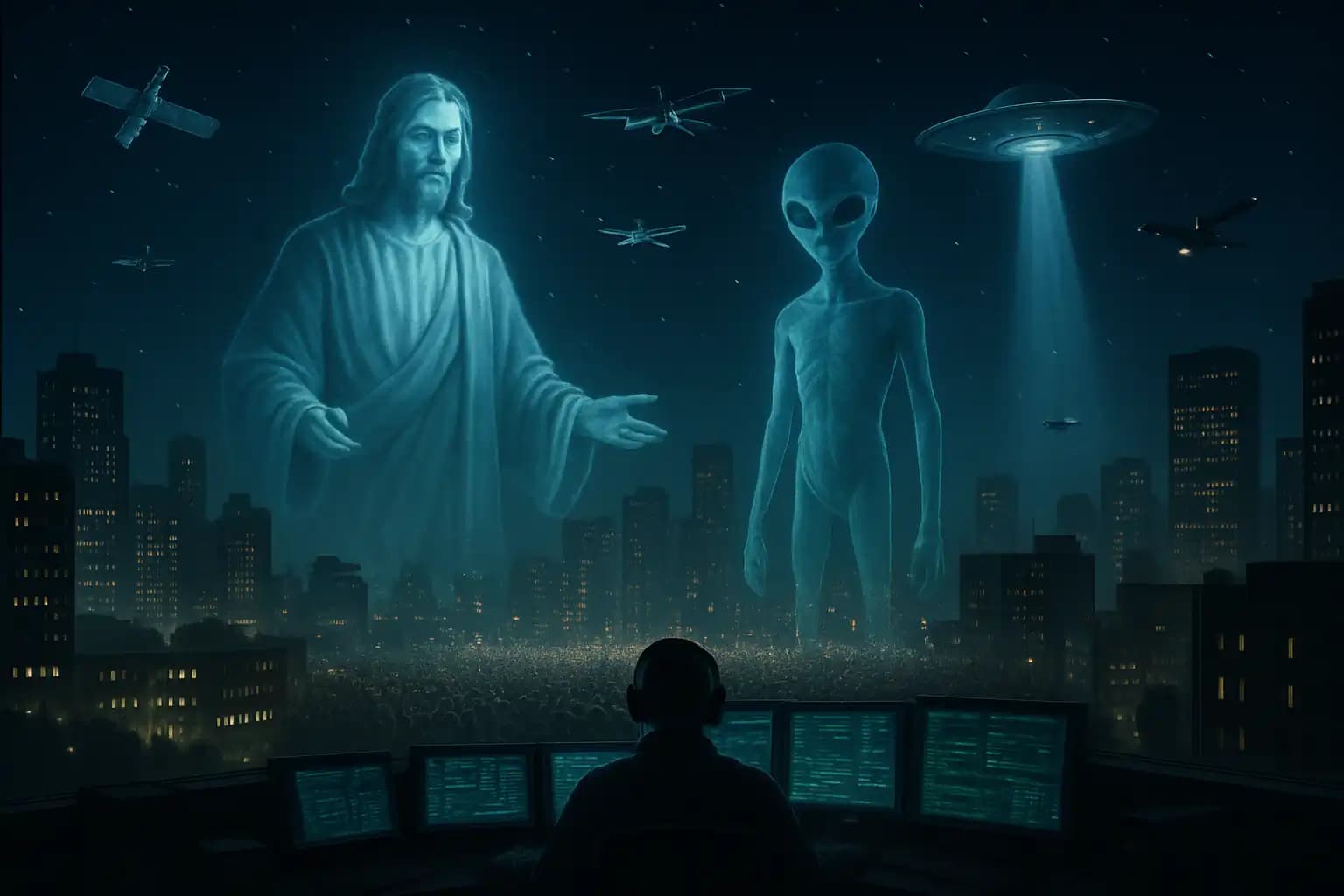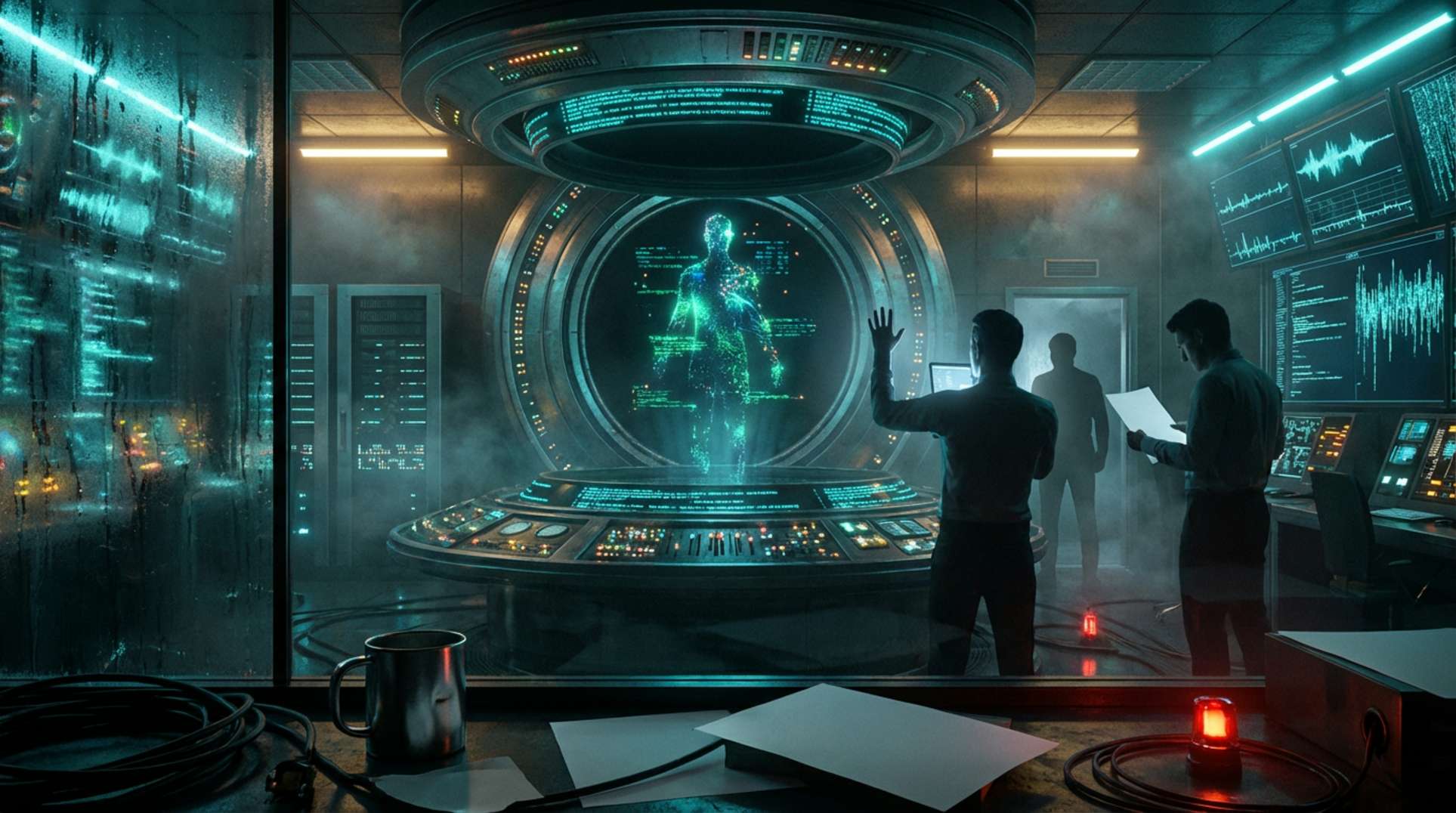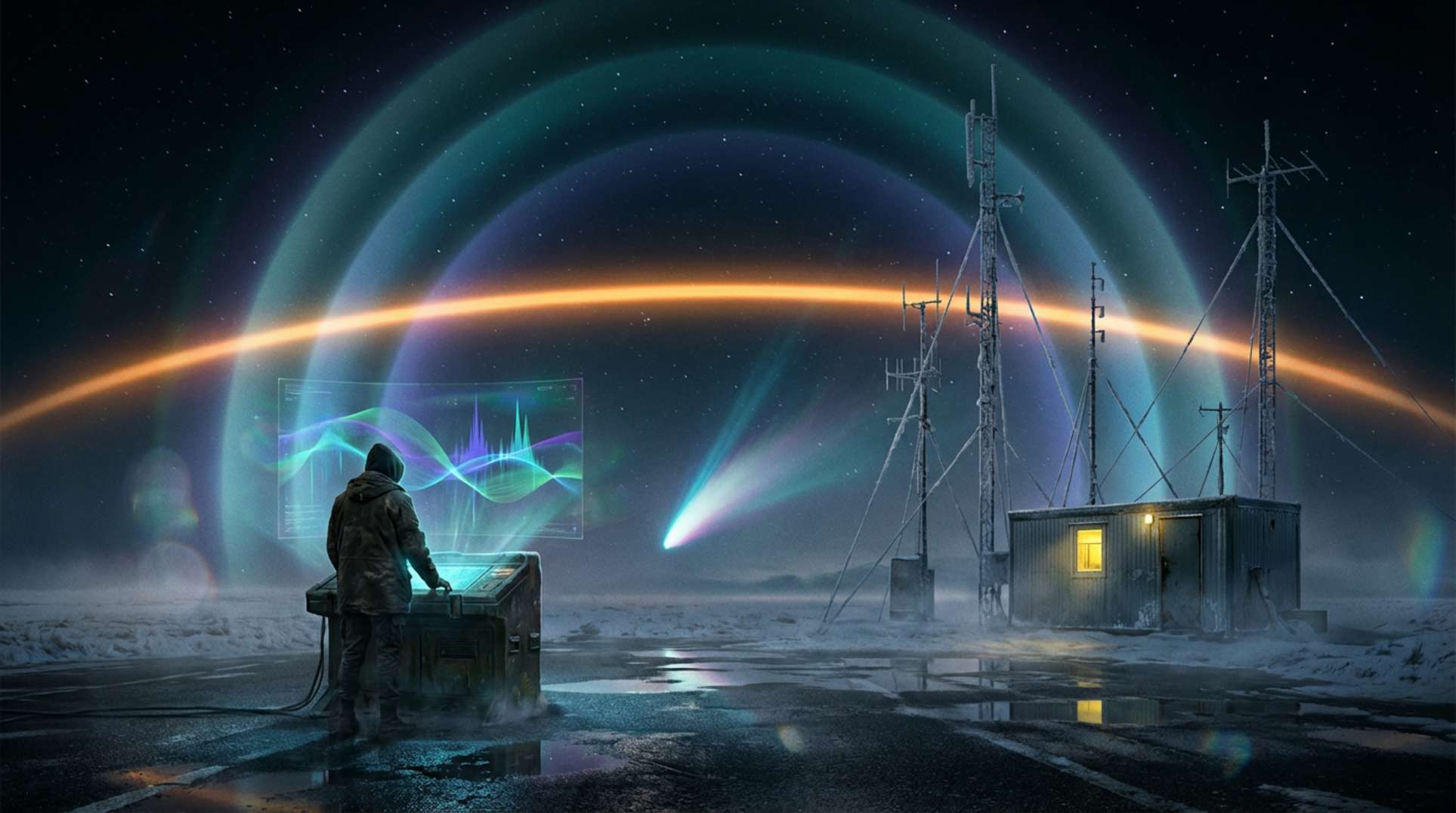Imagine a scenario where the Second Coming isn’t beamed in on a cloud but is displayed on a high-tech holograph courtesy of the deep state and NASA. Welcome to Project Blue Beam, a theory that has evolved from sci-fi obsession to late-night YouTube marathons, blending the Bible, fallen angels, and UFOs in a cinematic brew that excites and confounds. Beyond the light shows and doomsday prophecies, Project Blue Beam mirrors our cultural worries about technology, faith, and power in the 21st century.
The man behind this wild theory? Serge Monast, a Quebecois conspiracy theorist who outlined his vision in the 1990s. Monast claimed NASA and the United Nations collaborated on a four-part, global psy-op designed to dismantle traditional religions, dazzle the world with laser-projected messiahs (or aliens), and usher in a New World Order. He argued the plan involved staging a global crisis, exploiting belief in both the divine and the extraterrestrial. Decades after his suspicious death, Monast’s claims still resonate with those distrustful of official narratives—who view every weather balloon as a sign of Revelation.
The Blueprint of Project Blue Beam: Technology Meets Prophecy
At its core, Project Blue Beam asserts that tech-savvy individuals would use advanced holograms and frequency manipulation to simulate massive religious events. Imagine NASA’s expertise in lasers and sound wrapped in a cosmic special effects show intended to inspire awe and compliance. According to Newsweek’s analysis, supporters believe a “Second Coming” hologram could be presented above various nations, customized to each region’s dominant faith. With society already primed by viral videos and mass hysteria (just look at the hype around some apocalyptic date predictions), it’s clear why such an idea flourishes in a spectacle-addicted culture rife with suspicion.
This theory further proposes an artificial merger between human and alien mythos—an event engineered to eliminate religious certainty and pave the way for an overbearing world government. If that seems far-fetched, consider the real-world interplay of government secrecy, crash-retrieval rumors, and whistleblower stories that heat up the discourse (see this enlightening whistleblower exposé). The ultimate goal? As one paranormal investigation site notes, the release of a fabricated messiah—perhaps linked to fallen angels and lost knowledge—would ignite social upheaval and a shift in religious alignment.
NASA, UFOs, and Fallen Angels: The Web of Modern Conspiracy
Project Blue Beam is all-inclusive: it intertwines extraterrestrial lore, biblical end-times, and discussions about forgotten advanced civilizations. Some variants suggest the holographic displays could also simulate an alien invasion, producing a globally disorienting event that drives Earth’s governments to unify. As RationalWiki explains, this mythology compiles every paranoia’s greatest hits: secretive NASA operations, Illuminati involvement, and the most enigmatic biblical passages, all given a modern twist. This fusion of ancient prophecy and contemporary technology feels alarmingly relevant in an era of AI-generated deepfakes (explore chilling possibilities here), quantum experiments that muddle cause and effect (as seen in quantum research), and a landscape where distrust of authority reigns.
However, this isn’t the only theory linking Genesis to alien encounters. The notion of “fallen angels” as extraterrestrial beings or ancient astronauts runs deep, tying lost civilizations, divine revelations, and government secrecy together. The inclusion of UFOs in end-times narratives isn’t recent, but Project Blue Beam modernizes the concept: instead of simply waiting for a cosmic intervention, the public is conditioned, through leaks and memes, to anticipate an ultimate staged event. Some events—like the narrative surrounding strange occurrences on the moon—fuel speculation that technology capable of such a spectacle might be closer than we believe.
The Real-World Impact: Fear, Skepticism, and Modern Myth
While there’s no concrete evidence for blinking Jesuses or New World Order lasers, Project Blue Beam’s influence on pop culture and public distrust is undeniable. In the decades since Monast’s original broadcast, incidents like drone light shows, real-time holograms of celebrities, and viral UFO videos have fueled “proof” for believers. Psychologists and journalists suggest these narratives thrive where institutional trust falters—particularly as official secrecy (and whistleblowing) becomes a hot topic (see related Illuminati conspiracy).
Ultimately, Blue Beam reveals more about us than NASA’s capabilities: the human brain instinctively seeks patterns, fears manipulation, and merges ancient anxieties with cutting-edge technology. This is why the theory resurfaces around modern crises, whether they involve climate issues, AI advancements, or warnings of unchecked scientific pursuits (AI apocalypse insights). Skeptics may scoff, but in a world where the unreal seems increasingly plausible, who’s to say the next messiah won’t appear through pixels and projections?
To stay updated on the latest in the unexplained—be it prophecy, physics, or public paranoia—visit Unexplained.co. History shows that tomorrow’s breaking news can emerge from yesterday’s wildest ideas…or lead you down your newest late-night rabbit hole.





